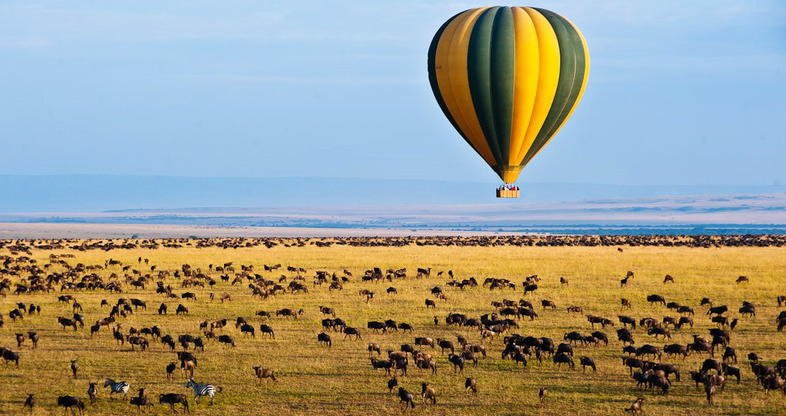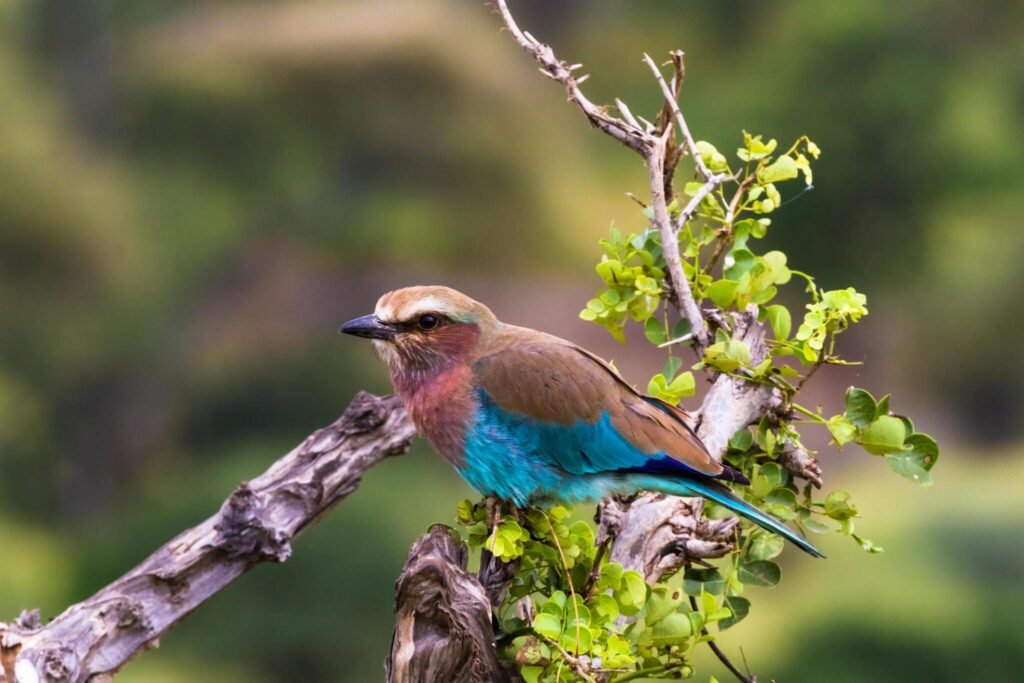Best Things to Do in Serengeti National Park : Serengeti National Park is one of the most iconic safari destinations in the world. Known for its vast plains, incredible wildlife, and stunning landscapes, it’s a must-visit for any traveler looking to experience the best of Africa. Whether you’re interested in witnessing the Great Migration, going on a thrilling game drive, or simply soaking in the beauty of the African savannah, Serengeti has something for everyone. In this guide, we’ll take you through the best things to do in Serengeti National Park to make your trip unforgettable.
Discover more about Serengeti safaris here.
Best Things to Do in Serengeti National Park : Witness the Great Migration
The Great Migration is undoubtedly one of the top reasons to visit Serengeti National Park. Every year, over two million wildebeest, zebras, and gazelles move across the plains in search of fresh grazing lands, with predators like lions and cheetahs following closely behind. This spectacular event is one of nature’s most awe-inspiring phenomena and offers fantastic wildlife viewing opportunities.
- Best Time to See It: June to October (river crossings) and December to March (calving season).
- Where to Watch: The northern Serengeti is ideal for river crossings, while the southern Serengeti is best for calving.
Learn more about the Great Migration and its key stages.
Best Things to Do in Serengeti National Park : Go on a Classic Game Drive
A game drive through the Serengeti is an experience like no other. The park is home to the “Big Five”—lions, leopards, elephants, rhinos, and buffalos—as well as a wide variety of other animals, including giraffes, hippos, and hyenas. With an experienced guide, you’ll be able to spot wildlife in their natural habitat and learn fascinating facts about the animals and the ecosystem.
- Best Time for Game Drives: Early mornings and late afternoons are ideal for wildlife activity.
- What You’ll See: Besides the Big Five, you can expect to see impalas, cheetahs, warthogs, and more.
Get tips on how to make the most of your game drive.
Best Things to Do in Serengeti National Park : Hot Air Balloon Safari
For a unique perspective of the Serengeti, consider taking a hot air balloon safari. Drifting silently above the plains at sunrise, you’ll have a bird’s-eye view of the landscape and its wildlife. This is one of the most magical ways to experience the park and is perfect for photographers looking to capture the vastness of the Serengeti.
- Why It’s Special: The aerial view gives you a better understanding of the sheer scale of the migration and the beauty of the park.
- Best Time: Balloon safaris run year-round but are especially breathtaking during the migration.
Learn more about hot air balloon safaris in Serengeti.

Best Things to Do in Serengeti National Park : Visit the Serengeti Visitor Centre
The Serengeti Visitor Centre, located near the Seronera area, is a great stop for those looking to learn more about the park’s history, ecology, and conservation efforts. The center features informative displays about Serengeti’s wildlife, the Great Migration, and the importance of protecting this unique ecosystem.
- Why Visit: It’s a great educational stop where you can gain a deeper understanding of the Serengeti’s ecosystem and conservation efforts.
- What to Do: Take a self-guided walking tour around the center to explore the displays and learn about the park’s rich biodiversity.
Explore the educational resources at the Serengeti Visitor Centre.
Best Things to Do in Serengeti National Park : Birdwatching in Serengeti
The Serengeti is not only famous for its large mammals but also for its impressive variety of bird species. Over 500 bird species can be found in the park, making it a paradise for birdwatchers. From large birds like ostriches and vultures to colorful species like lilac-breasted rollers, the park offers endless opportunities to spot rare and beautiful birds.
- Top Species: Look for crowned cranes, secretary birds, and the majestic African fish eagle.
- Best Time for Birdwatching: November to April, when migratory birds arrive from Europe and Asia.
Find out more about the best birdwatching spots in Serengeti.

Best Things to Do in Serengeti National Park : Explore the Moru Kopjes
The Moru Kopjes are a series of rocky outcrops that rise above the Serengeti plains. These ancient granite formations provide shelter for wildlife, including lions, leopards, and rhinos. The kopjes are also home to some fascinating Maasai rock paintings and gong rocks, making them an interesting cultural and historical site within the park.
- Wildlife to See: The kopjes are a favorite resting spot for lions and leopards, so keep your eyes peeled for predators lounging on the rocks.
- Cultural Significance: The Maasai people traditionally used these rocks for religious rituals, and you can still see the rock paintings today.
Learn about the geological history and significance of the Moru Kopjes.
Best Things to Do in Serengeti National Park : Visit a Maasai Village
For a cultural experience, consider visiting a Maasai village near the Serengeti. The Maasai are a semi-nomadic people known for their distinctive clothing, traditional rituals, and close connection with nature. A visit to a village gives you the opportunity to learn about Maasai culture, watch traditional dances, and see how the Maasai live in harmony with the land.
- What to Expect: You’ll have a chance to meet Maasai warriors, learn about their daily life, and understand their important role in preserving the ecosystem around the Serengeti.
- Cultural Insights: This experience is a great way to gain a deeper understanding of one of Africa’s most famous indigenous cultures.
Discover more about the Maasai culture and traditions.
Best Things to Do in Serengeti National Park : Enjoy a Walking Safari
While game drives are the most common way to explore the Serengeti, a walking safari offers a more intimate experience. Accompanied by an experienced ranger, you’ll walk through the bush, learning about the smaller flora and fauna that are often overlooked from a vehicle. This activity provides a unique perspective on the park’s ecosystem and allows for closer encounters with nature.
- What You’ll Learn: Your guide will teach you about animal tracks, insects, and plant life while keeping an eye out for larger animals like giraffes and zebras.
- Safety: Walking safaris are led by armed rangers to ensure your safety at all times.
Find out more about walking safaris in the Serengeti.
Best Things to Do in Serengeti National Park : Visit the Grumeti River
The Grumeti River is famous for the dramatic river crossings that take place during the Great Migration. From May to July, thousands of wildebeest and zebras attempt to cross the crocodile-infested waters, creating one of the most intense and thrilling wildlife spectacles in the world.
- When to Visit: The best time to witness the river crossings is from June to July.
- What to Expect: You’ll see herds of wildebeest braving the waters while crocodiles lie in wait.
Learn more about the Grumeti River and its importance in the migration.
Best Things to Do in Serengeti National Park : Conclusion
Serengeti National Park is a place of incredible beauty and adventure, offering something for every type of traveler. Whether you’re seeking thrilling wildlife encounters, cultural experiences, or serene landscapes, the Serengeti will not disappoint. From the Great Migration to the hidden gems of the Moru Kopjes, these are just a few of the best things to do in this world-famous park. Start planning your Serengeti safari for an unforgettable journey into the heart of Africa’s wilderness.
For more details on organizing your Serengeti adventure, visit Kilimanjaro Climb Specialist or Eddy Tours & Safaris.

